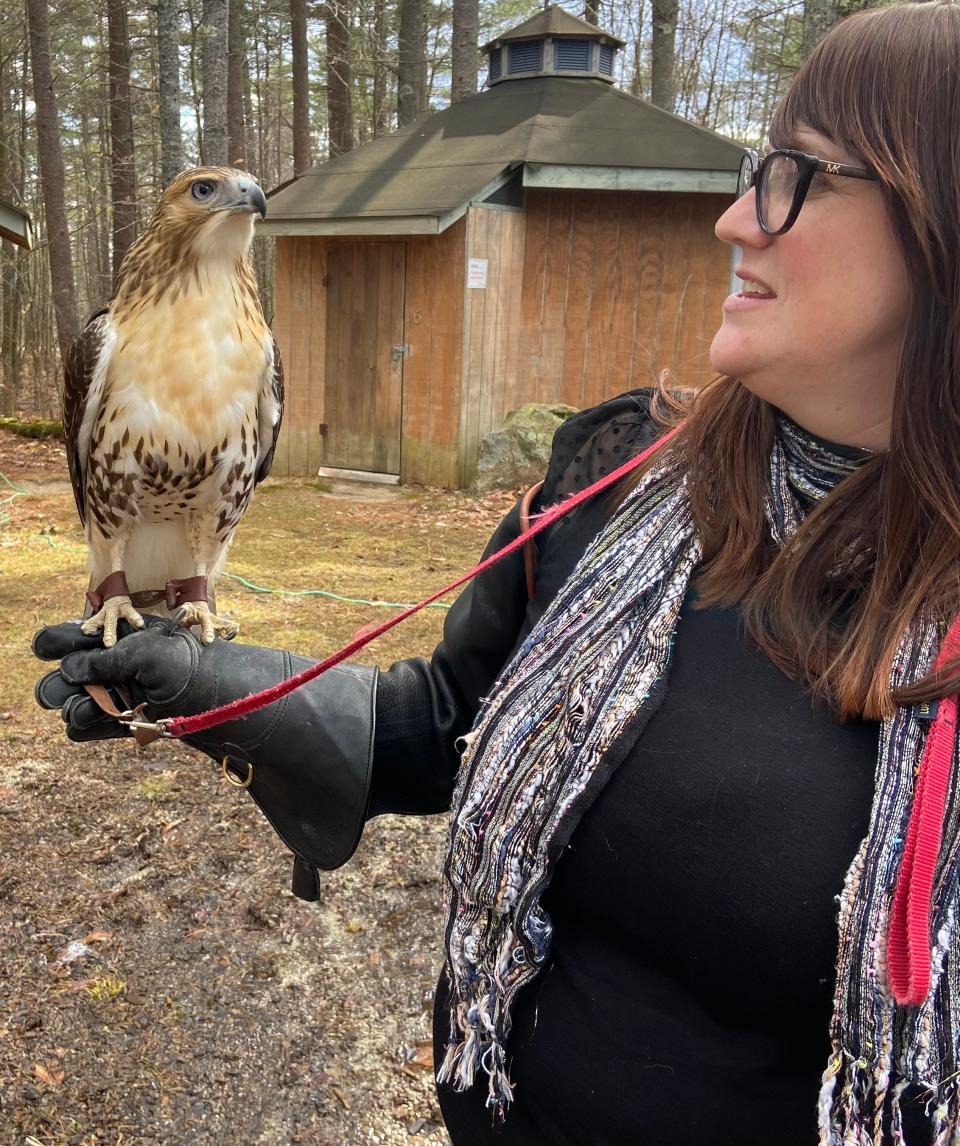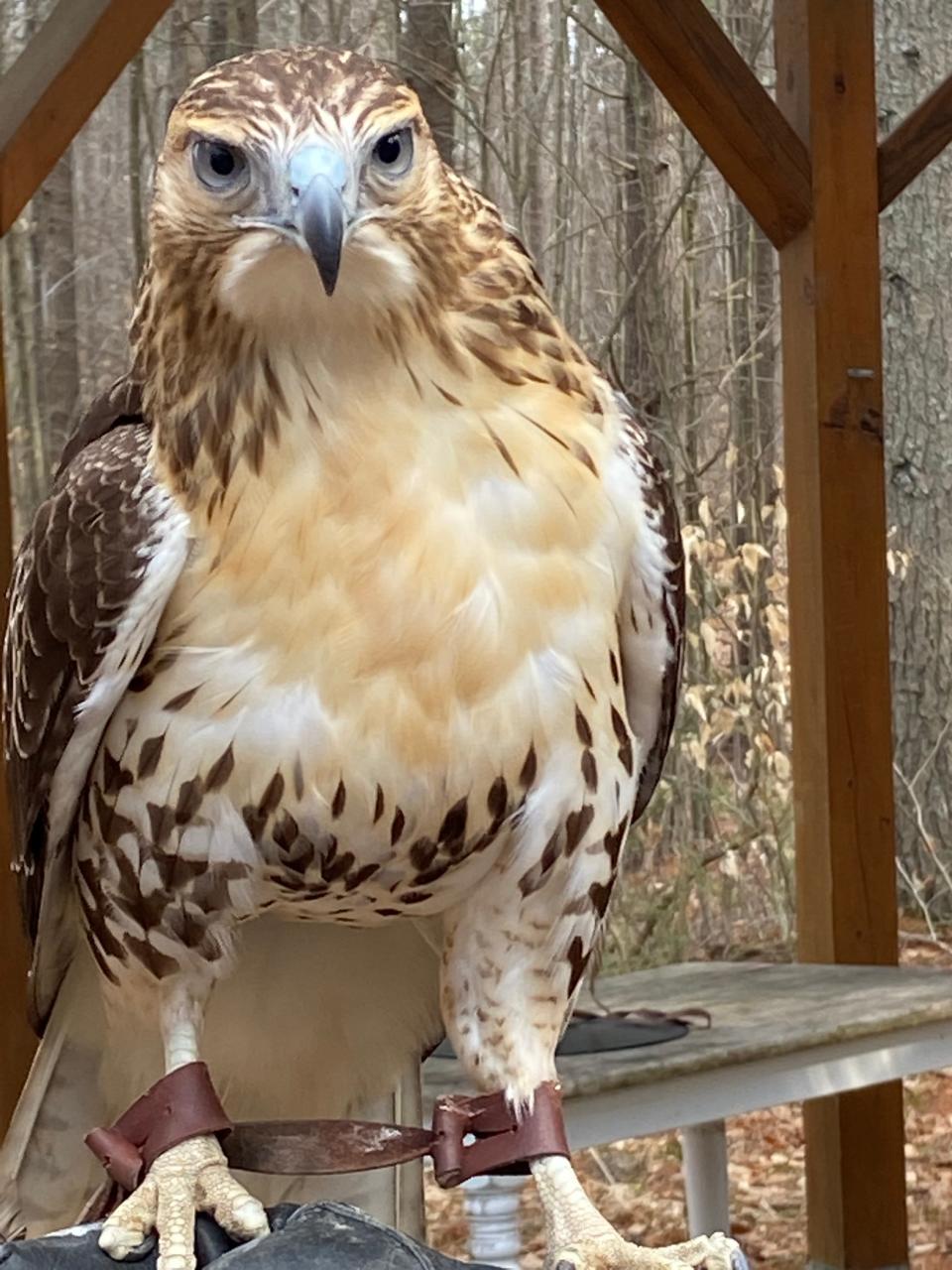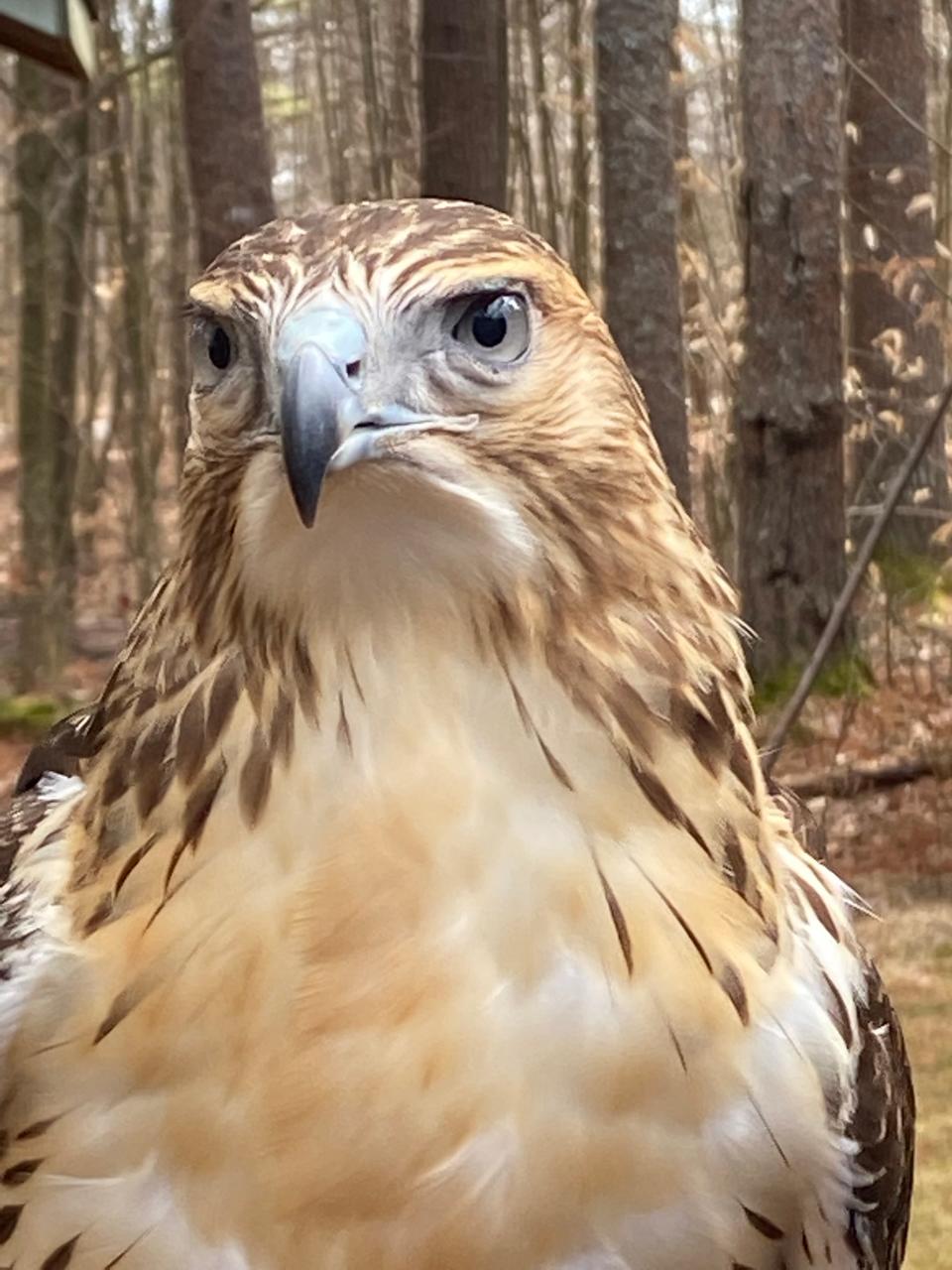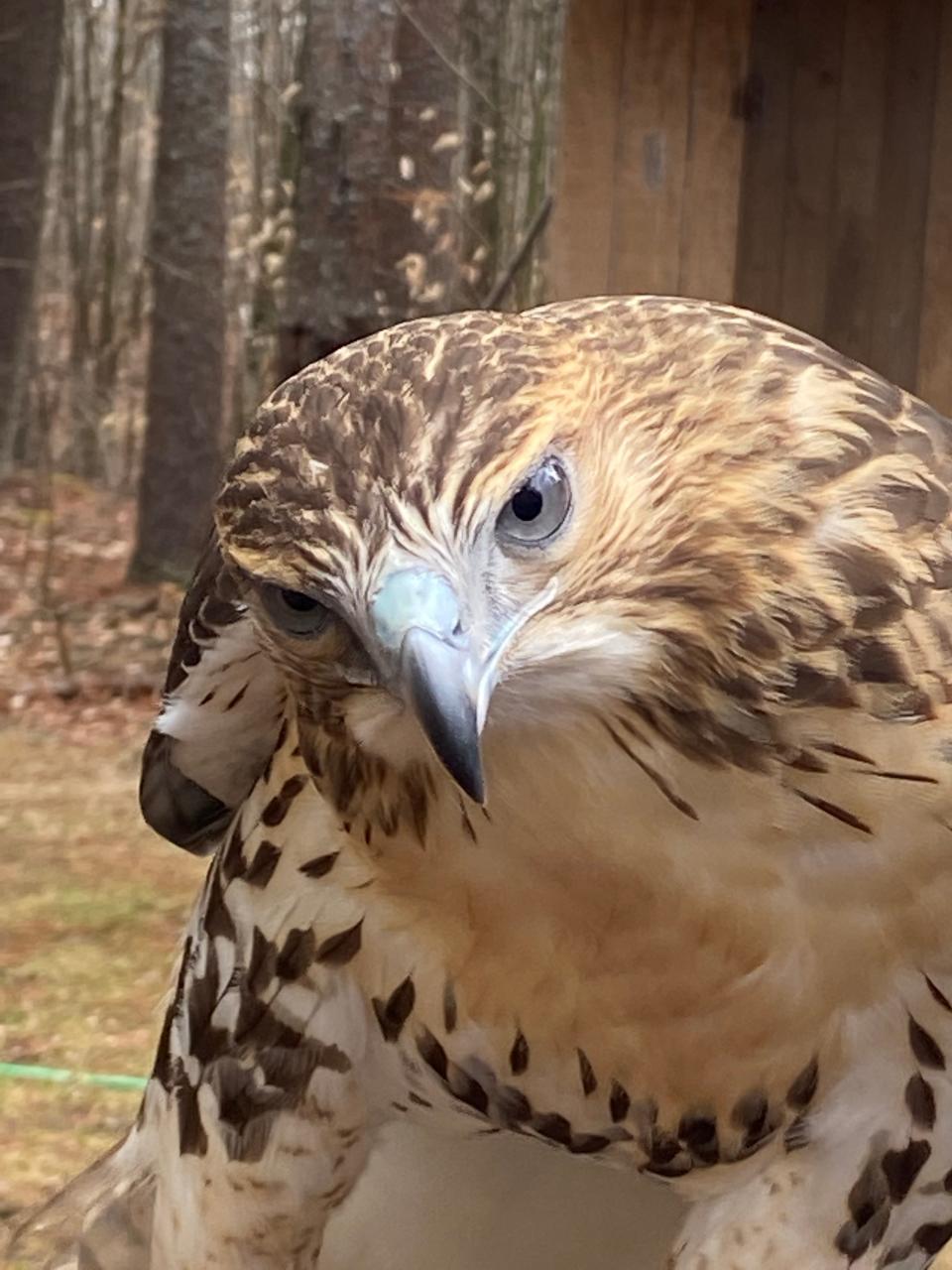How can we be better neighbors to animals? Center For Wildlife's rescued hawk teaches us.
We should know better than to let our chickens free-range, especially without a rooster to keep watch. But they are so good at escaping from the chicken run, we let them have their way. So unfortunately, they often end up feeding the local wildlife. Most recently, we lost a chicken to our neighborhood red-tailed hawk.
Red-tailed hawks are the most common hawk in this area. These are the hawks that hang out along roads. Drive down most any highway, especially in winter, and if you see a large hawk with a white breast and a darker belly band sitting in a tree or on a telephone pole, that’s a red-tail. Red-tailed hawks also typically do the voiceover for most bald eagle calls in commercials and the movies. They have that classic hoarse, screaming “kee-eeeee-arr” whereas the bald eagle call is a wimpy high-pitched whistling.

I got to visit a relatively new addition to the Center for Wildlife in Cape Neddick in York, Maine, this past week, an immature red-tailed hawk who had been transferred to the CFW back in October from the Raptor Trust in New Jersey. His name is Pisces.
More: Nature News: It's a perfect time for the Big Night of amphibian migration
According to Kristen Lamb, executive director of the CFW, he was rescued after his nest was removed from a golf course last summer. He had two siblings in the nest, and was the smallest of the triplets.

Pisces’ development was much slower than his siblings, and he required much more hands-on care and attention, and upon admission he was found with blood and parasites in his ears - perhaps injured when the nest came down. He was moved outside with his siblings, but unfortunately either due to his genetic, or the extra hands-on care he required during the imprinting stage, he was not able to grasp hunting and evading predation like his siblings. In the wild, he would not have been able to hunt for himself or have the proper drive to get away from predators, so would not survive. He was therefore considered non-releasable and has joined the Center’s educational ambassador program.

I think it’s important to think about these non-releasable birds. They are often in captivity because of our thoughtless actions. Raptors naturally have a hard enough time just making it to adulthood. Studies indicate that raptors have an 85% mortality rate their first year. Just having waited until later in the year to take down trees could have made the difference between life in captivity and in the wild for Pisces.
This is something to think about right now as birds are beginning to nest. In fact, the red-tailed hawks around here have most likely already laid eggs, and those eggs have probably already hatched. So avoid taking down trees from here on out, wait until fall or winter.

Pisces is a gorgeous hawk, with unusual silvery eyes – juvenile red-tails usually have pale green eyes that turn auburn in adults. Like most juveniles, he does not yet have a red-tail. Those telltale cinnamon-red tail feathers, on top only, they are pale on the under side, won’t come in until he molts this summer. Look for him in the new enclosures next time you visit the Center for Wildlife. He is an educator now.
More: How the Center for Wildlife is helping adults 'unplug' with nature
The lesson he has taught me is to be more aware of the woods around me, especially now in the spring when birds and other animals are nesting and raising young. By thinking about when we clear trees, mow the field or even make a lot of noise in the woods, we can help the animals around us survive, not perish. This is one of my goals for Earth Day (April 22). Be a better neighbor to the animals around me.

Susan Pike, a researcher and an environmental sciences and biology teacher at Dover High School, welcomes your ideas for future column topics. She is looking for readers to send her the signs of spring they're noticing so she can document them on her website pikes-hikes.com. Send your photos and observations to spike3116@gmail.com. Read more of her Nature News columns online at Seacoastonline.com and pikes-hikes.com, and follow her on Instagram @pikeshikes.
This article originally appeared on Portsmouth Herald: Rescued hawk Pisces is new Center for Wildlife ambassador

